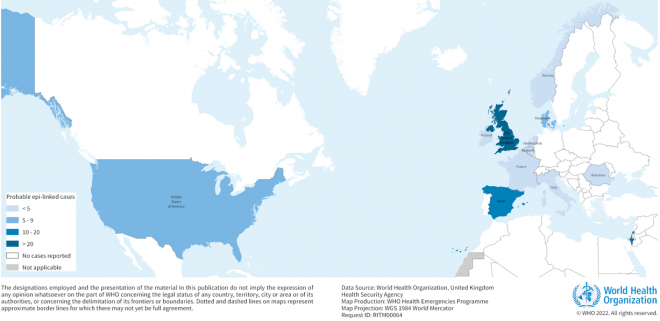169 cases of acute childhood hepatitis in 11 countries and one death. Only five days after the World Health Organization notified the appearance of the outbreak in the United Kingdom, international authorities have located almost two hundred cases; most in Europe, but also in the US and Israel. This is what we know for now.
What do we know, for now, about the disease?. We know that the most important clinical problem is inflammation of the liver, hepatitis. In addition to this, it also seems clear that the majority of cases had a very rapid evolution, significantly altered liver enzymes and did not register fever. However, the clinical signs, for now, are poorly defined and they seek not to leave out any case of a disease of which we do not know the details.
For this reason, in general terms, all hepatitis in which serum transaminase values exceed 500 IU/L is considered suspicious. Subsequently, if known hepatitis viruses (A, B, C, E, and D) are ruled out, it is reported. From what we know so far, most children recover well from the disease although, according to the WHO, about one in 10 has required an emergency liver transplant.
Until now, very little information about the deceased child in the United Kingdom has emerged.

Distribution of cases of severe acute hepatitis of unknown origin as of April 23, 2022 | WHO
The disease in Spain. If we stick to the epidemiological data, Spain is one of the countries that has detected the most cases. However, to date, it cannot be said that we are seeing signs of an exploding outbreak. Of the 13 cases of the disease that have been reported, a dozen of them occurred since January and have only been identified retrospectively. According to reports from the Ministry of Health, this would be within what is expected taking into account data from the rest of the world.
What is causing the disease? We don’t know yet, but as more cases surface, some things are starting to become clearer. For example, as explained by the European Center for Disease Control, “the investigative team in the United Kingdom, where the majority of cases have occurred to date, consider an infectious agent to be the most likely cause, based on the clinical features and epidemiology of the cases.
At the moment, any relationship of the cases with the covid-19 vaccine has been ruled out and there does not appear to be any common exposure to food or drinks or beverages of any kind. As I said, the investigations have also excluded that it is a viral hepatitis of types A, B, C, D and E.
What is known about adenovirus 41? These days many theories are being heard and some hypotheses are being worked on. The one that sounds the loudest right now is that of adenovirus 41, a virus that causes pediatric gastroenteritis that can cause liver problems in immunocompromised children.
However, as Raúl Rivas González, Professor of Microbiology at the University of Salamanca, points out, despite being plausible, it cannot explain the seriousness of the cases. In short, for now, almost everything is speculation and must be taken as such.
Keep monitoring, keep analyzing. We should not be fooled: it is inevitable that this type of data will generate alarm among the population. Especially when they directly affect children. Despite this, the good news is that the international reaction to the alarm is being very rapid and in less than a week a good number of cases have emerged that will allow the characteristics of the disease to be studied in great detail.
Image | Nguy N Hi












